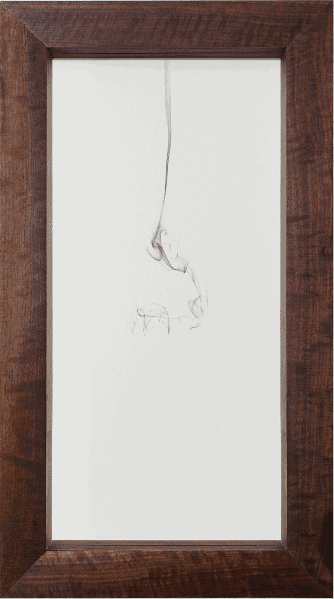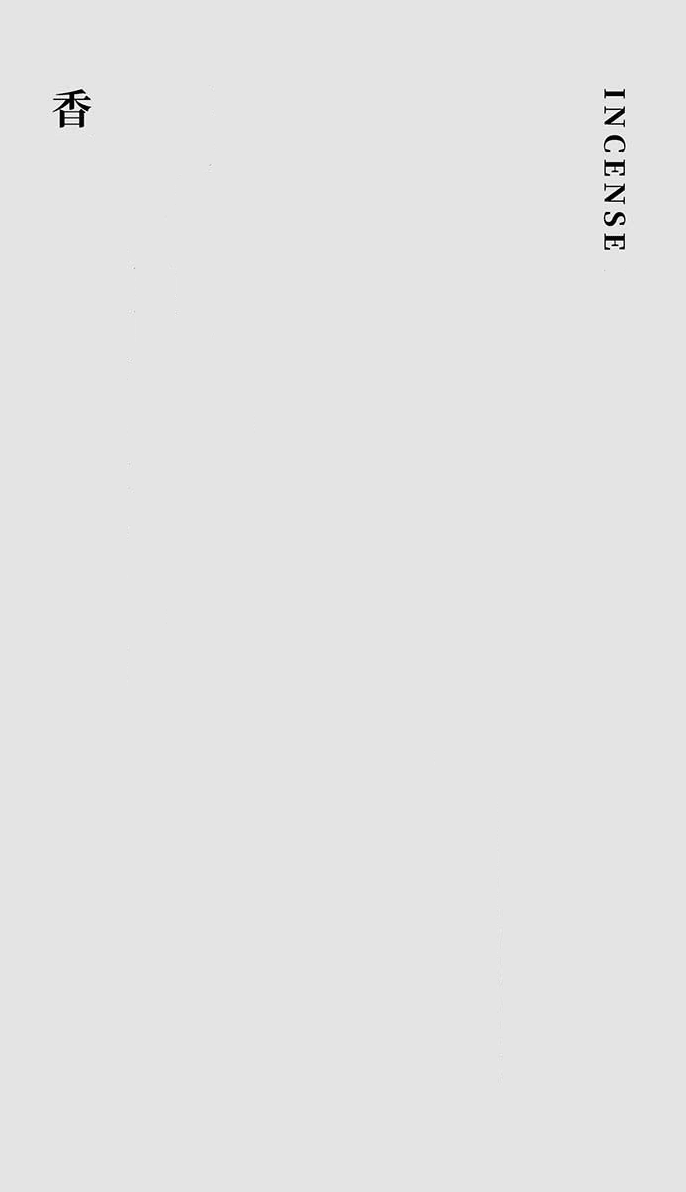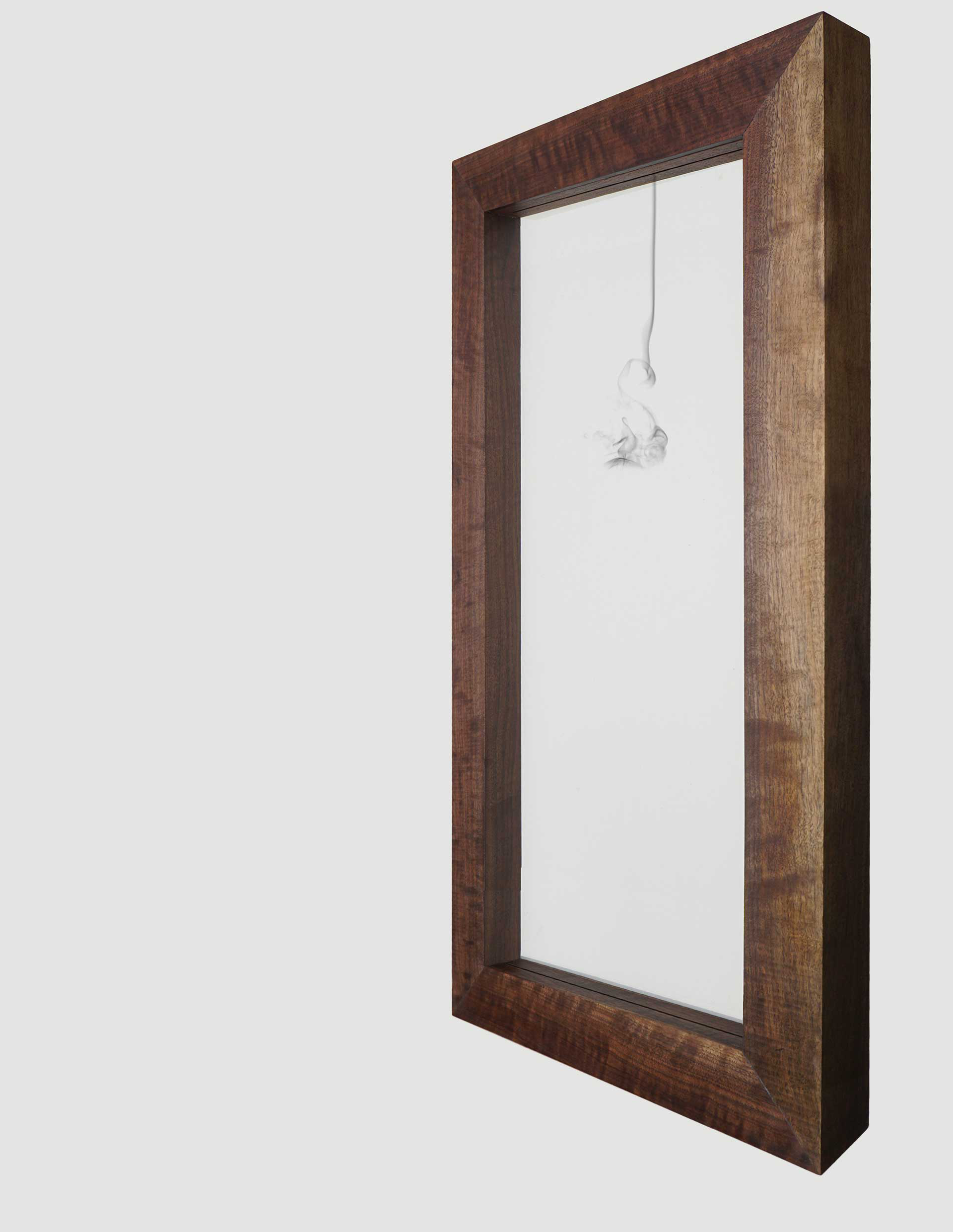

《香画:氲迹》的灵感源自藏族文化中深具神圣性的燃香仪式,它是一种对“空性”的直观隐喻。将宗教仪式中的物质转化(香化为烟)延伸至视觉领域,以纯白画布为“空”,以烟迹为“色”,在有无之间构建一场动态的哲学实践。
烟雾从画框顶部倾泻而下,如瀑布悬停,凝滞成柔和的云纹。烟雾的轨迹随气流、温度与时间悄然演变,每一刻的画面皆为独一无二的“一期一会”。观者凝视的并非固定的图像,而是烟迹生灭的过程本身—— 一幅始终在“完成中”又“消逝中”的活态画卷。
作品通过烟雾在画布上的停留与消散,直指佛教中的“缘起性空”、“存在与空无”。画面因烟雾的附着而短暂“存在”,又因烟雾的逸散而重归“空无”,二者并非对立,而是同一本质的流动显现。
观众在静谧中观察烟雾的缓慢舞蹈,嗅闻檀香、柏木等传统香材的气息,进入一种冥想状态。画框成为仪式的焦点,纯白画面不再是等待被填满的虚空,而是包容万物生灭的场域——正如《心经》所言:“色即是空,空即是色”。
The inspiration for Incense Painting comes from the sacred incense rituals of Tibetan culture, serving as a direct metaphor for "emptiness." It extends the ritual's material transformation (incense into smoke) into the visual realm, using the white canvas as "void" and the smoke traces as "form," creating a dynamic philosophical practice between being and non-being.
Smoke pours down from the top of the frame, like a suspended waterfall, condensing into soft, cloud-like patterns. Its path shifts subtly with air currents, temperature, and time, making each moment a unique, once-in-a-lifetime image. The viewer observes not a fixed picture, but the process of the smoke's creation and dissipation—a living painting that is perpetually both "completing" and "vanishing."
Through the smoke's temporary presence and eventual disappearance on the canvas, the work points directly to the Buddhist concepts of "dependent origination" and "emptiness," and the relationship between existence and void. The image briefly "exists" as smoke settles, and returns to "emptiness" as it disperses—the two are not opposites, but flowing manifestations of the same essence.
In stillness, the audience watches the smoke's slow dance and breathes in the scent of traditional materials like sandalwood and cypress, entering a meditative state. The frame becomes the ritual's focal point. The white surface is no longer a void waiting to be filled, but a field encompassing the birth and death of all phenomena—as the Heart Sutra says, "Form is emptiness, emptiness is form."







Copyright © 2017 北京子予艺术设计有限公司. 保留所有权利。 京ICP备15057606号-1

